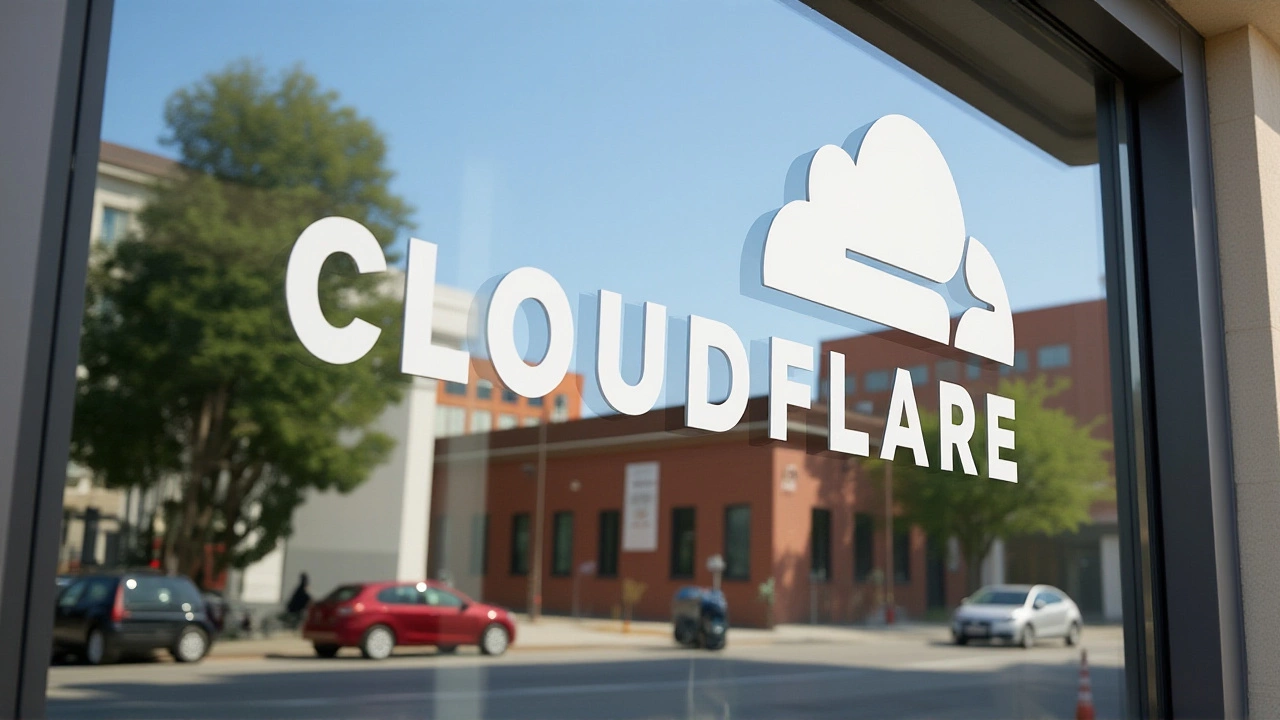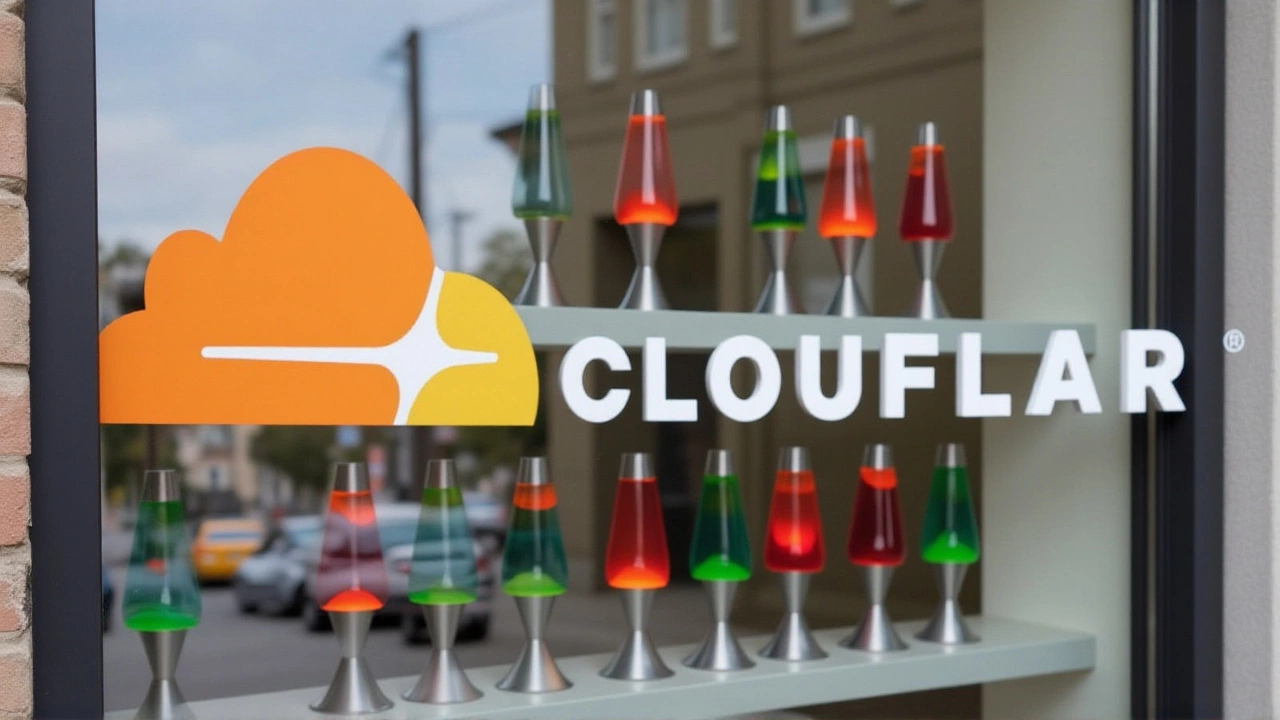Cloudflare Outage Takes Down X, ChatGPT, Shopify in Global Internet Disruption
 Nov, 21 2025
Nov, 21 2025
On November 18, 2025, at 11:30 UTC, the internet blinked. Not because of a cyberattack or solar storm—but because a single configuration file got too big. Cloudflare, Inc., the San Francisco-based backbone of nearly half the web, suddenly stopped working. X went dark. OpenAI LLC’s ChatGPT froze. Shopify Inc.’s online stores crashed. Even Downdetector, the very tool people use to track outages, went offline. It was the digital equivalent of a traffic light failing in every major city at once.
How a Tiny Mistake Broke the Internet
Here’s the thing: no one hacked Cloudflare. No server exploded. No power grid failed. Instead, engineers at Cloudflare, Inc. made a change—a routine update to their Bot Management system, designed to filter out automated traffic. That change caused a configuration file to double in size, from roughly 100MB to over 200MB. Sounds harmless, right? Not when that file is loaded into memory across 275+ global data centers every few seconds.
The file didn’t just bloat—it broke. As it grew, it consumed so much memory that Cloudflare’s internal systems began timing out. Workers KV, the key-value store used by Cloudflare Access, started failing. Turnstile, the CAPTCHA-like tool protecting dashboards, stopped responding. The Cloudflare Dashboard itself became unreachable. And because these services were deeply interdependent, the failure didn’t stay isolated. It spread like a virus through Cloudflare’s architecture, silently, slowly, until the entire network was gasping.
Who Got Hit—and Who Couldn’t Even See It Coming
By 1:15 UTC, users worldwide reported being locked out of sites they relied on daily. OpenAI LLC’s ChatGPT, which routes traffic through Cloudflare, showed error messages instead of responses. Shopify Inc. merchants couldn’t process payments. X (formerly Twitter) saw login failures and feed timeouts. Even Anthropic PBC, maker of Claude AI, was affected.
But the most chilling detail? Downdetector went offline. That’s like a fire alarm going off in a burning building—except the alarm itself stopped working. The outage was so deep, it crippled the tools meant to measure it. Cisco ThousandEyes, a network intelligence platform, confirmed the issue wasn’t in the network path—it was in the backend. HTTP 5XX errors spiked. Latency? Normal. Packet loss? Zero. The problem wasn’t connectivity. It was logic.
The CEO’s Post-Mortem: A Warning Written in Code
Three days later, Matt Prince, CEO of Cloudflare, Inc., published a candid post-mortem. He didn’t deflect blame. He didn’t blame “human error.” He laid it bare: a single configuration change, poorly tested in isolation, triggered a cascading failure across systems that were never designed to handle such a shock.
“We assumed the system could absorb a 50% increase,” Prince wrote. “We forgot that when you’re serving 20% of the internet’s traffic, 50% is 10 million requests per second.” The Bot Management system, meant to protect websites, became the very thing that broke them. And because Workers KV powered Access, and Turnstile secured the Dashboard, the failure wasn’t linear—it was exponential.
Gremlin, Inc., a company that specializes in chaos engineering, later called the event “a textbook cascading failure.” They noted that their own platform could simulate it: inject a small fault, wait, let it propagate, then watch the dominoes fall. “This wasn’t an accident,” said one Gremlin engineer. “It was a prediction waiting to happen.”

Why This Matters More Than Just a Few Hours of Downtime
For most users, the outage lasted less than five hours. Services came back online by 16:44 UTC on November 21, 2025, according to Cloudflare’s status page. But the damage wasn’t just technical—it was psychological. Millions learned, in real time, how fragile the internet really is.
Think about it: ChatGPT, Shopify, X—they’re all built on top of Cloudflare. So are banks, hospitals, news sites, and government portals. When Cloudflare stumbles, the whole ecosystem wobbles. And no one outside the company had any warning. No redundancy. No failover. Just one file, one mistake, one moment of silence across the digital world.
Experts are now urging regulators and tech leaders to treat critical infrastructure providers like Cloudflare with the same scrutiny as power grids or water systems. “We don’t let one company control the flow of electricity without oversight,” said Dr. Lena Torres, a cybersecurity professor at Stanford. “Why do we let them control the flow of information?”
What’s Next? The Industry’s Quiet Reckoning
Cloudflare has since rolled out new safeguards: automated size limits on configuration files, mandatory canary deployments in isolated regions before global rollout, and a new “blast radius” monitoring dashboard. But these fixes come too late for many.
Other cloud providers—Amazon Web Services, Google Cloud, Microsoft Azure—are quietly reviewing their own dependencies. Startups are rushing to build decentralized alternatives. And investors? They’re asking harder questions about single points of failure.
One thing’s clear: the internet isn’t broken. But its foundations are thinner than we thought.
Frequently Asked Questions
How did the Cloudflare outage affect everyday users?
Millions experienced sudden login failures, unresponsive websites, and broken e-commerce checkouts. Services like ChatGPT, X, and Shopify became inaccessible, disrupting work, communication, and online shopping. Even tools meant to track outages, like Downdetector, failed—leaving users in the dark about what was happening.
Why didn’t Cloudflare’s backup systems prevent this?
Cloudflare’s services are deeply interdependent—Workers KV supports Access, Turnstile secures the Dashboard, and all rely on shared infrastructure. The oversized configuration file overwhelmed memory systems across multiple services simultaneously. Traditional backups don’t help when the flaw is in the logic, not the hardware.
Could this happen again with another provider?
Absolutely. The same interdependency exists at Amazon, Google, and Microsoft. A 2024 MIT study found that 78% of major cloud outages stem from configuration errors, not attacks. Without stricter validation protocols and isolated deployment testing, another cascading failure is inevitable.
What’s being done to prevent future outages like this?
Cloudflare now enforces automated size limits on configuration files, requires canary deployments in low-traffic regions before global rollout, and monitors blast radius in real time. Industry groups are also pushing for standardized “dependency mapping” requirements for critical infrastructure providers, similar to financial system stress tests.
How long did the outage last, and when was it fully resolved?
The outage began at 11:30 UTC on November 18, 2025. Services started recovering around 16:00 UTC on November 19, but full stability wasn’t confirmed until Cloudflare’s status page updated at 16:44 UTC on November 21, 2025, marking “No incidents reported.” The delayed resolution highlighted how complex recovery was from a cascading failure.
Why did Downdetector go down during the outage?
Downdetector, operated by Ookla, LLC, relies on Cloudflare’s CDN and security services to handle its massive traffic spikes. When Cloudflare’s backend failed, Downdetector lost its ability to serve pages—even though users were trying to report the outage. It was a grim irony: the tool meant to track the problem couldn’t function because of it.